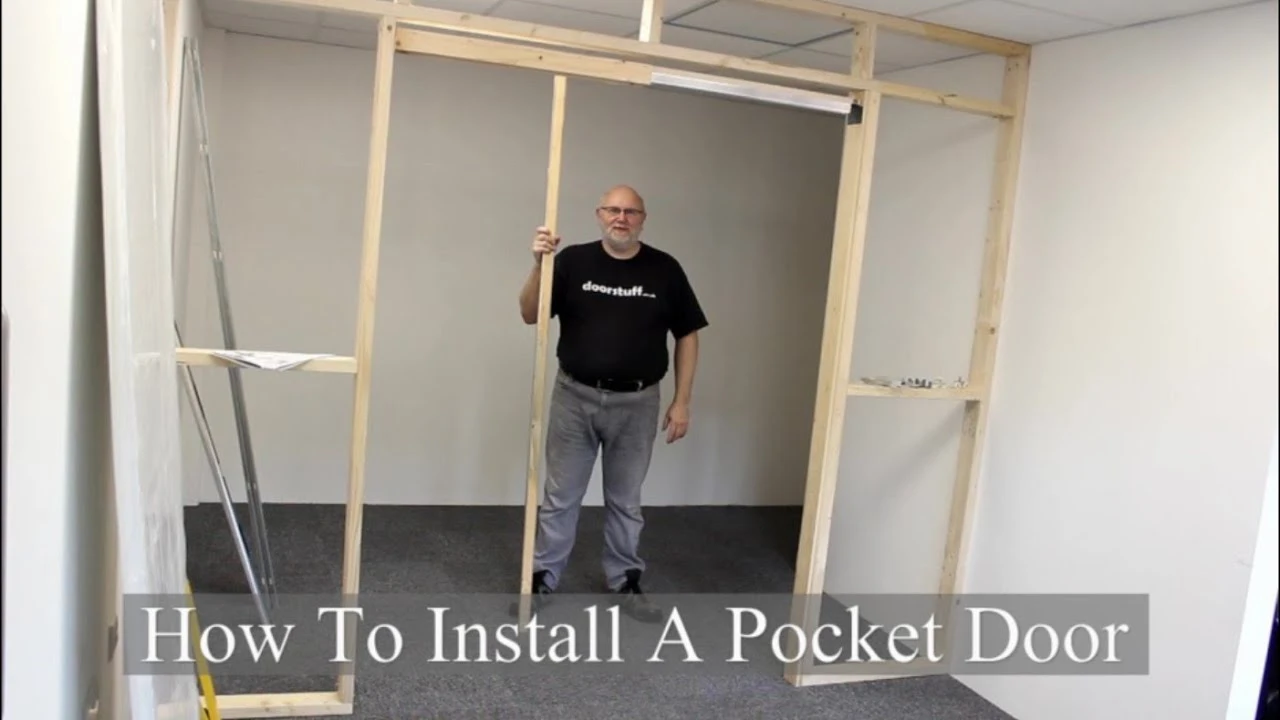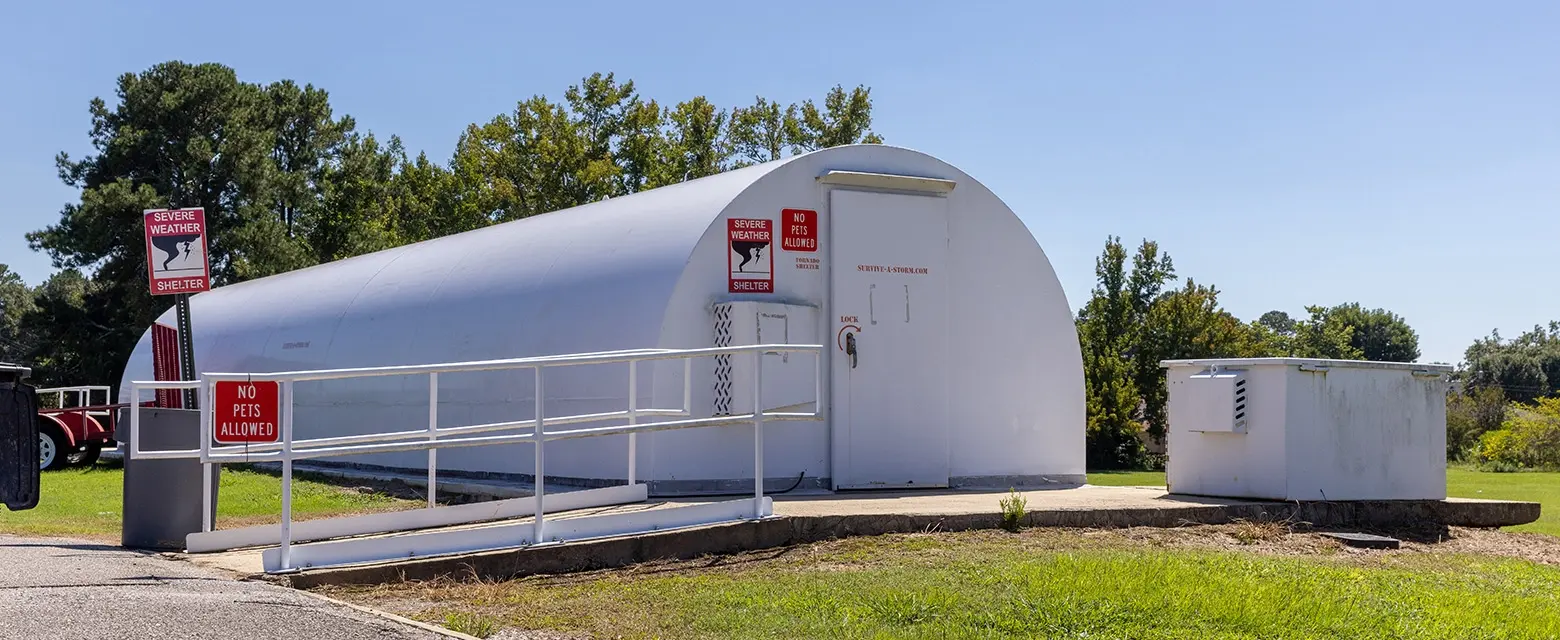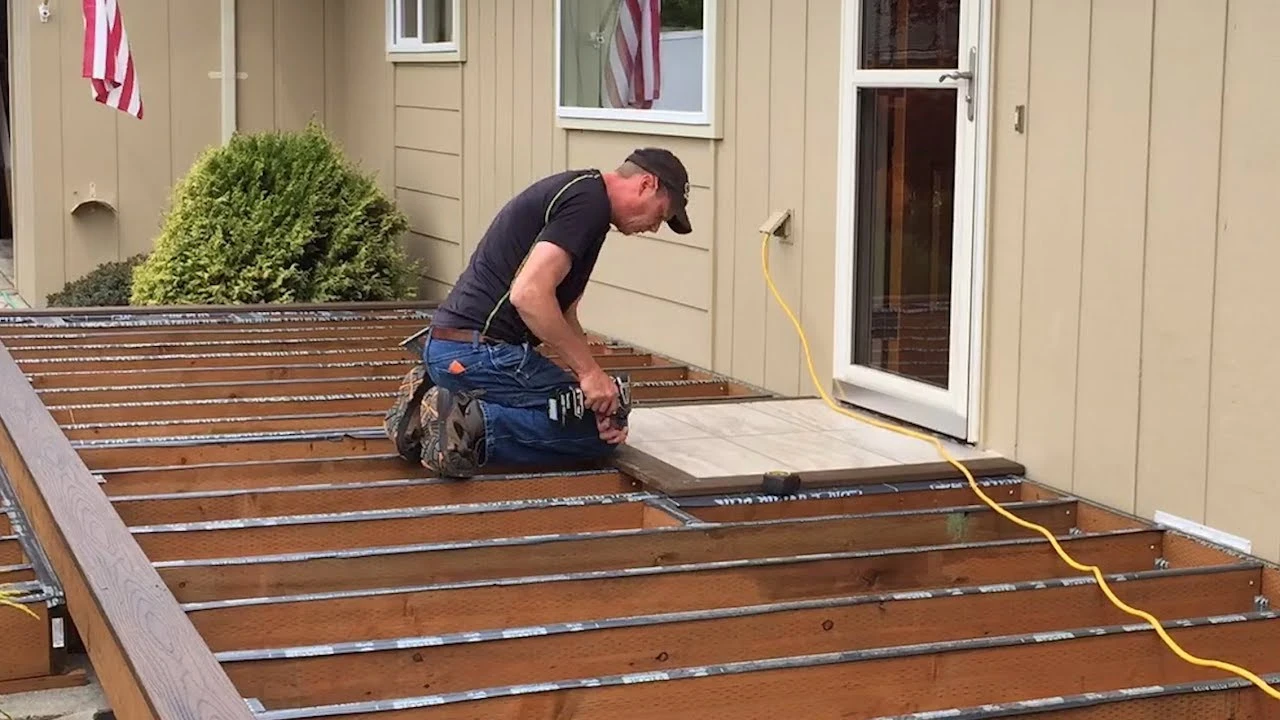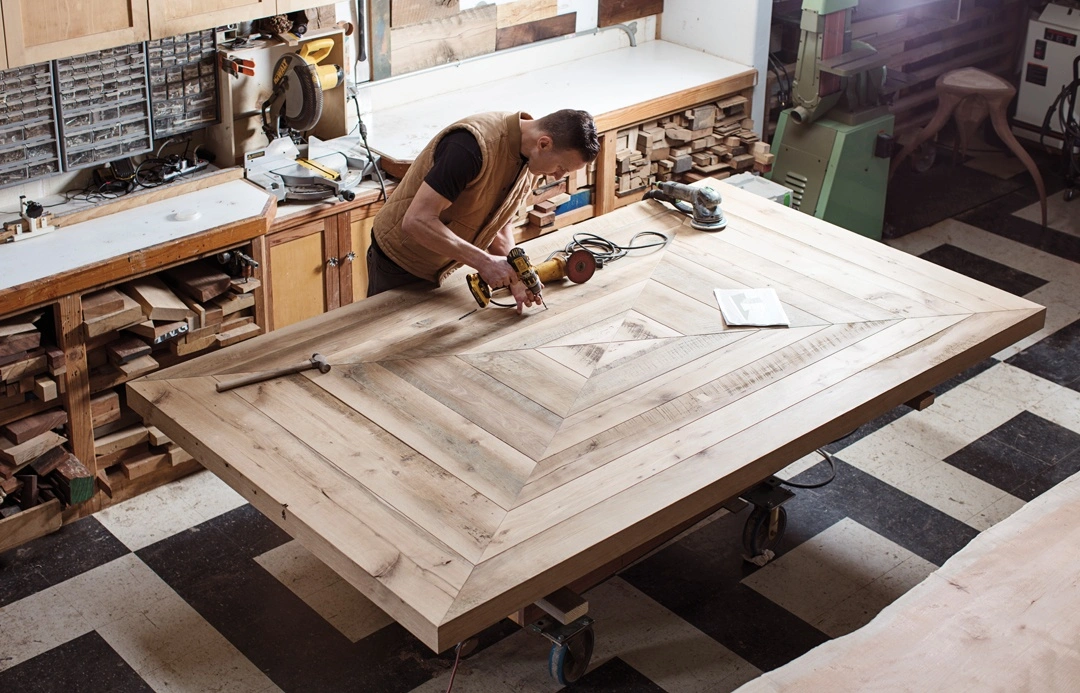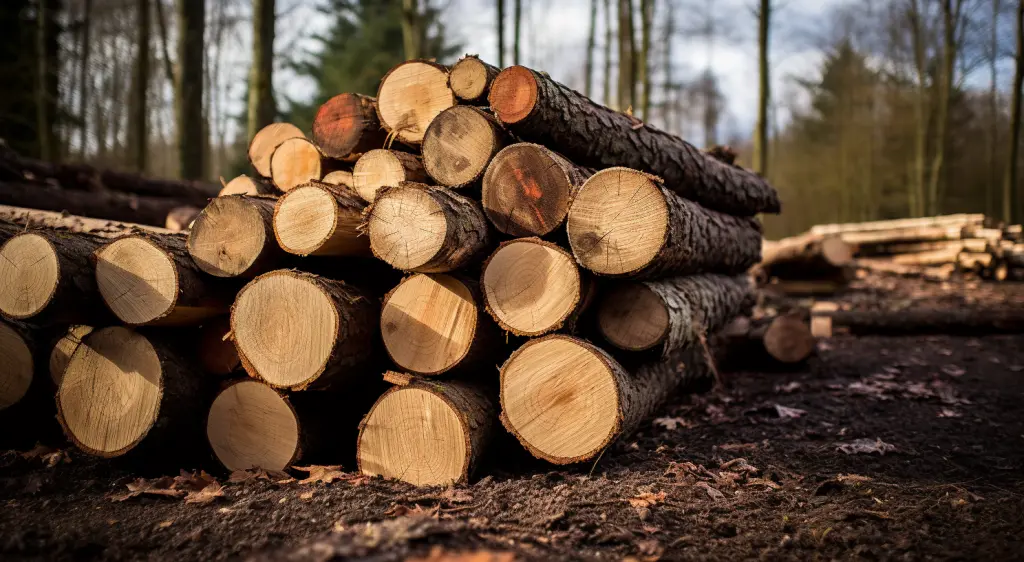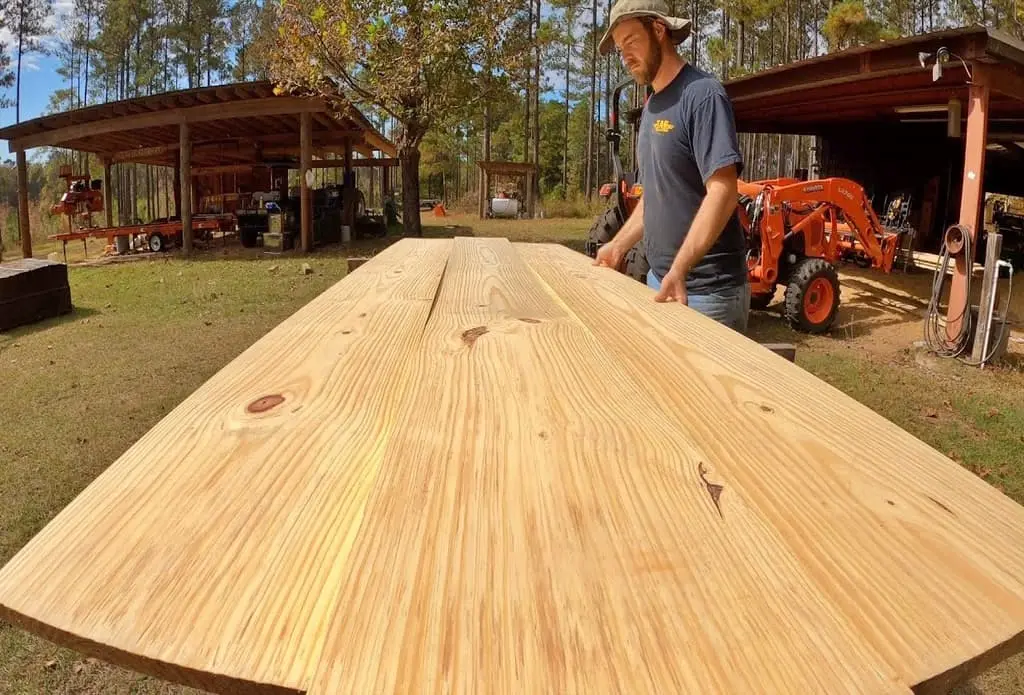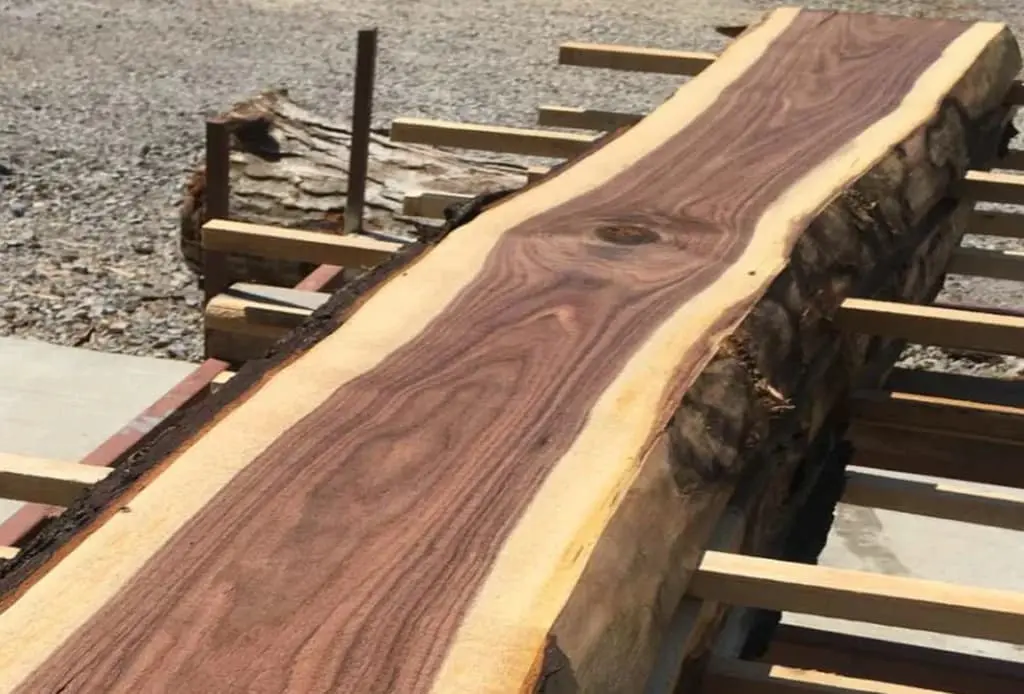In 2025, over 60% of new homeowners are adding outdoor spaces like decks If you are one of them, then this blog is for you! We are not talking about designs and dream wood tones! There’s one big thing to figure out, which is how much the labor is going to cost.
We have been in the construction business for over two decades. So, we know that labor can eat up more than half of your entire deck budget. And it’s rarely simple math. The cost to build isn’t just a matter of boards and screws, but it depends on your zip code, the shape and size of the deck. Moreover, the team working at the site also impacts the total cost needed for completion.
It doesn’t really matter what type of deck you are looking to build. It could be a small backyard platform or something grand with wraparound steps and railings. Nonetheless, assessment of total labor cost is necessary for both. Knowing what you’ll pay per square foot can save you from budget blowouts. Let’s break it all down.
What’s the Average Labor Cost Per Square Foot?
The labor cost for building decks varies due to certain primary factors. A 200-square-foot deck will set you back $3,000 to $7,000 without materials, permits, or extras.
Why such a wide range? It comes down to complexity and who’s doing the job. A simple deck with clean lines and no extras takes less time and effort. Add stairs, curves, or multiple levels, and labor time jumps. So does the price. The more hands-on detail, the higher the cost.
- Low-wage areas are the ones where these costs are lower.
- Cities have higher-end pricing. That’s because of intricate designs and extensive experience.
What Drives Deck Labor Costs Up or Down?
Some factors have a big effect on how much you’ll pay for labor. Here’s what to look out for while assessing the cost to build a deck in 2025.
Complex Designs Take More Time (And More Cash)
Even a basic 30×40 pole barn costs over $15,000 and might need 10 to 12 full workdays. However, if you toss in stairs, angled cuts, extra levels, or built-in benches, the project timeline can double. More time means more labor costs. Wraparound or multi-tiered decks can push labor costs over $40 per square foot, thanks to custom framing and extra safety steps.
Details That Drive Up Labor Time:
- Curved edges or diagonal patterns
- Built-in seating or planter boxes
- Elevated decks with railings and stairs
- Unique shapes or layouts
Work Experience
Contractors who are well-versed in custom or luxury builds charge $35 to $50 per square foot. While they are considered expensive, these guys yield results quickly without giving you much hassle.
On the contrary, less experienced contractors quote $15 to $20. It will sound good until delays pop up. Moreover, the final product may also turn out to be subpar. We suggest you pay a little more up front, which will help avoid repairs or rebuilds later.
Perks Of High-End Pros:
- Faster turnaround
- Fewer mistakes
- Better structural reliability
- Licensed and insured work
Your Zip Code Makes A Big Difference
Where you live has a direct impact on labor costs. Big cities and coastal areas have higher contractor rates. So, a simple deck can cost over $35 per square foot. On the contrary, in a rural area in the Midwest or South, prices are low. On average $18 to $22 per square foot is considered optimum over there.
If you want to know how much the deck building costs in your region, you can use our services. We use the RS Means software system to determine the extremely precise cost range for your lumber construction project.
Also read: What is Whitewood board? Types, Advantages, and Uses
Seasons Can Shift Prices
Contractors get slammed from March through July. That’s peak building season, and prices often go up because everyone’s looking to get a deck built. Some crews even add a 10 to 20% markup during those months.
Want to score a discount? We suggest you schedule your project for late fall or early winter. That’s because contractors are less busy and more open to negotiation at that time. Just be aware that cold weather might slow things down.
| Influencing Factor | How does it affect labor costs |
| Design complexity | Drop simple decks into low-cost add levels or curves, stairs or built‑ins, and labor jumps higher |
| Contractor expertise | Experienced or certified builders typically charge more per square foot |
| Regional location | Urban or high-demand areas often pay higher hourly rates |
| Seasonal timing | Demand peaks in spring/summer push rates up; off-season can lower prices |
How Much Does Design Complexity Really Affect Deck Cost?
The shape and style of your deck might seem like personal choices, but every curve and corner adds a price tag. Simpler decks go up quickly. Fancy ones? Not so much!
Once you move beyond the flat, square basics, labor costs rise fast. There would be more effort, more tools, and more measuring. So what really drives up the cost? Let’s break it down.
Multi-Level Decks? Think Twice Before You Stack
Adding layers to your deck is like going from a flip phone to a smartphone. That means more features and more fuss. A basic, ground-hugging platform might only need a couple of workdays. But throw in another level, and now you’re dealing with extra framing, load-bearing posts, and extra staircases.
Those layered decks often cost 50 percent more in labor. Expect something like $30 to $40 per square foot, and that’s if the design isn’t wildly complex. Every extra frame needs support. Every height transition demands more care. It’s a workout for the crew and your wallet.
Stairs And Railings
You might think stairs are simple. A few steps, no big deal, right? Well, turns out they’re one of the trickier parts of the build. One small miscalculation, and it’s back to square one. Most contractors charge an extra $25 to $50 in labor per step, which adds up quickly!
Railings bring their own drama. You’ll be dealing with angles, spacing, safety codes, and stability checks. Even if you’re going with a straightforward wood rail, the time it takes to measure, cut, and install adds up. Combined, stairs and railings often push labor into the $20 to $35 per square foot zone.
Custom Shaped Decks
Decks with curves and rounded edges look amazing. But they’re not for the faint of heart or tight budgets. Unlike straight cuts that follow the grain, curves need custom templates, special saws, and careful hands.
Labor costs often jump by $5 to $10 per square foot just because of those bends. And the more intricate the layout, the longer the crew will be out there sweating over boards and framing. You’ll be paying for time, skill, and the occasional headache.
Floating Or Detached Decks Are Cheaper To Build
Floating decks, those that aren’t anchored to a house, are often simpler and quicker to build. Since they don’t require attachment to existing structures or complex support systems, they tend to range between $8 and $22 per square foot in labor. They’re ideal for flat yards and basic outdoor living areas, offering more affordability when it comes to labor.
| Deck Feature | Typical Labor Rate Impact |
| Multi‑level or tiered design | Increases labor by 25–50% |
| Stairs and railings included | Raises labor to $20–$35/sq ft |
| Curved edges or complex shapes | Adds $5–$10/sq ft to labor |
| Floating or detached decks | Lower range: $8–$22/sq ft |
Impact Of Lumberwood and Hardwood Prices In 2025
Lumber costs in mid‑2025 are volatile. For instance, Amish rough-cut lumber prices were lower back at the start of 2025 but surged in the mid due to tariffs. It makes deck budgets hard to pin down. Here’s a breakdown of what’s affecting prices and how much you’re likely paying:
| Hardwood Species | Price per 4/4 board‑foot (2025) |
| Price of Poplar logs | $3.00 – $3.75 |
| Price of Red Oak | $4.50 – $5.25 |
| Price of White Oak | $8.00 – $9.00 |
| Black Walnut Board Feet Price (rustic / 4/4) | $8.00 – $10.75 |
| Price of Walnut (standard grade 5/4–8/4) | $10.00 – $12.50 |
Now that you know softwood and hardwood lumber prices, it is necessary to consider some key concepts. Let’s go through them one by one:
- Framing lumber composite prices have risen. Softwood framing lumber is currently around $422 to $431 per 1,000 board feet. It is roughly 16 to 17 percent higher than mid-2024.
- Current futures are at $607 and above per 1,000 board feet. This reflects an increase of over 25 percent year over year.
- New tariffs and trade pressures are affecting imports, which would increase the prices even more. For instance, extra duties on Canadian lumber may push prices even higher.
How To Calculate The Total Cost Of Building A Deck In 2025
The previous sections have already discussed the real-time price of building a deck and all the factors impacting it. However, every deck has a special set of attributes that can change cost accordingly. That’s why we have created a perfect plan to calculate the total cost of building a deck in 2025 without breaking the bank. Here are the steps:
Step 1: Measure Your Deck Area In Square Feet
Start by measuring the deck’s length. Get a measuring tape and find the actual length and width of the place using the longest and widest points. Next, multiply them to find the total square footage.
Example:
We will calculate the estimated cost for a deck of 320 sq ft. Measurement should be like this;
16 ft × 20 ft = 320 sq ft.
But what if the deck has unusual shapes? These could be corners or circles? Don’t worry, we have a fix! In that case, estimate the shape as a rectangle and add 10–15 percent extra for waste and complexity. This type of square footage forms the basis for both material and labor estimates.
Step 2: Calculate Material Cost Per Square Foot
Materials make up 30 to 50 percent of the total installed cost. So, it is necessary to choose materials that are efficient and perfectly stable. Here’s a list of Lumber prices 2025 with their special attributes:
| Decking Material | Approximate Cost per sq ft | Notes |
| Pressure-treated pine | $3 – $6 | Budget-friendly, widely available |
| Cedar or redwood | $5 – $10 | Naturally resistant to decay |
| Composite decking (e.g., Trex) | $8 – $13 (materials only) | Low-maintenance, synthetic materials |
| Exotic hardwoods (Ipe, mahogany) | $9 – $20 | High durability, varies by species/grade |
To Calculate:
To calculate the cost, you must multiply your deck area by your material cost per square foot. Also, add $1 to $4 per sq ft more for benches and railings.
Step 3: Estimate Labor Cost Per Square Foot
Labor generally ranges between $11 and $22 per square foot. This is for basic builds using pressure-treated wood. However, if the project is a bit complex, this number can jump up to $15 and $35+ per square foot. Some high-end projects may exceed even $40 to $60 per sq ft.
Key Considerations:
- In simpler builds with fewer features, labor falls in the lower range.
- For decks with stairs, railings, curves, elevated framing, or multiple tiers, labor costs increase toward the upper end.
Also read: Everything You Need to Know About Lumber Grades
Step 4: Add Labor Cost To The Material Subtotal
For a 320 sq ft deck example:
| Calculation Step | Assumed Unit Cost | Subtotal |
| Material cost (composite) | $10 per sq ft | 320 × 10 = $3,200 |
| Labor cost (complex build) | $30 per sq ft | 320 × 30 = $9,600 |
| Base installed cost | $12,800 |
Step 5: Factor In Additional Charges
There are some extra charges that increase the total cost of creating a deck in 2025. We will list each of them one by one.
- Permits and inspections are typically $225 to $500. However, it still depends on your region and zip code.
- Demolition and existing structure costs $5 to $15 per sq ft.
- There are extra costs for stairs, lighting, built-in benches, or hot tubs. It ranges from $500 to $5,000, depending on the scope.
In our 320 sq ft example, assume:
- Permit is $350
- Demo of existing deck: 120 sq ft × $10 = $1,200
- Stairs and railing are $1,500
The sum of all is $3,050. This is the amount that will be added to the extra category. So, the project totalled to around $15,850.
Step 6: Build In A Contingency Buffer
Given the market volatility in mid-2025, especially lumber pricing, adding a buffer is wise. Consider a 10 to 15 percent contingency on your total.
10 percent contingency on $12,800 base = $1,280
Revised total with buffer: about $14,080, before extras
After extras and buffer: approximately $17,400
Step 7: Compare To National Benchmarks
National averages help validate your estimate. Installed deck costs typically average between $25 and $50 per sq ft. On the contrary, higher-end projects often reach $50 to $80 per sq ft or more.
In Our Example:
The base installed cost is $40 per sq ft. This is considered mid-range as of the new woodboard rate change. After extras and contingency, this number reaches up to $54 per sq ft, which fits the upper-middle range.
Step 8: Get Multiple Estimates And Refine
Don’t just stop at a single consultative estimate. You should seek 3 or more contractor bids using the same project scope. Get material quotes from local suppliers based on real-time availability or use a wood price calculator tool to double-check your estimate.
Conclusion:
The cost of constructing a deck in 2025 is not a hard and fast factual number. On the contrary, it is a range that keeps changing due to several factors. If the deck involves unusual shapes or complex procedures, the total cost would be different. Similarly, a deck with a simple framework will cost less.
If you want to find out the precise cost of building a deck in 2025, our 8-step plan given above is your best shot. You can change the values according to your location and material cost for an accurate estimate. However, if you do not want the hassle of calculating everything by yourself, contact us and let our team help you estimate your lumber projects.

